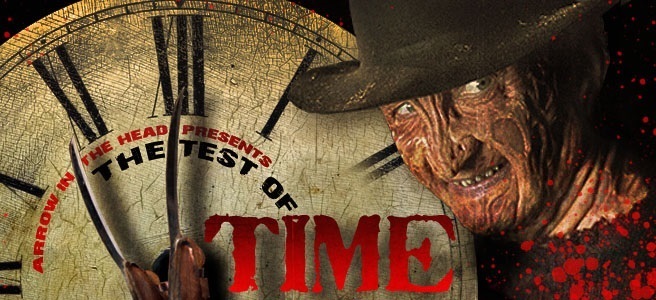
We all have certain movies we love. Movies we respect without question because of either tradition, childhood love, or because they’ve always been classics. However, as time keeps ticking, do those classics still hold up? Do they remain must see? So…the point of this column is to determine how a film holds up for a modern horror audience, to see if it stands the Test of Time.
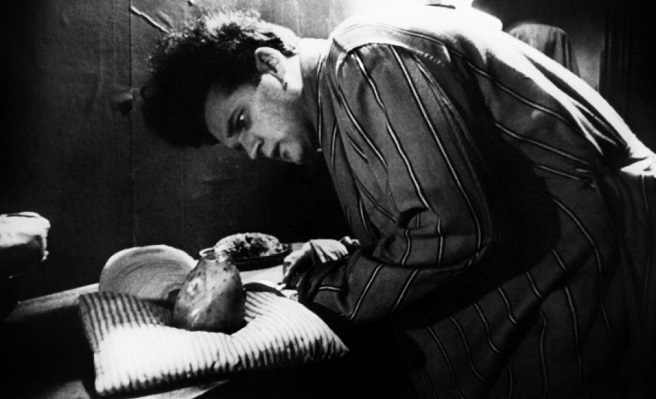
DIRECTED BY DAVID LYNCH
STARRING JACK NANCE, CHARLOTTE STEWART, JEANNE BATES, ALLEN JOSEPH
All hail a salute from King David I to King David II – from Cronenberg to Lynch – as we follow up a Test of Time article on the former’s THE BROOD with the latter’s even more disturbing delivery of petrifying progeny. Indeed, if ever there was a classified cult movie, ERASERHEAD is it. And while it’s damn hard to believe the movie turns 40 years old this year, what isn’t difficult to imagine is how nastily nauseating, deeply uncomfortable and downright queasy the movie still makes you feel all these years later. Straight up, ERASERHEAD is a gut-churning display of avant-garde ingenuity, a borderline experimental student film stitched together piecemeal over the course of five years. Hell, Lynch even lost a cinematographer in the middle of the shoot, replaced the deceased Herb Caldwell with Frederick Elmes, and hardly missed a beat.
Moreover, as his feature debut, the film would inform the world of Lynch’s distinct style of moviemaking, be it in the surreal tone, the moody atmosphere, the deranged characters, the bleak humor, the absurd amateurism at times, etc. Even more impressive given the fact the flick was made for a mere $20,000, with Lynch performing every creative duty from writing, directing and producing to special effects and production design. As truly unnerving as the film is, it’s a classic piece of auteur artwork. Question is, would still be considered so by today’s standards? Let’s get into it below when ERASERHEAD squares off with The Test of Time!
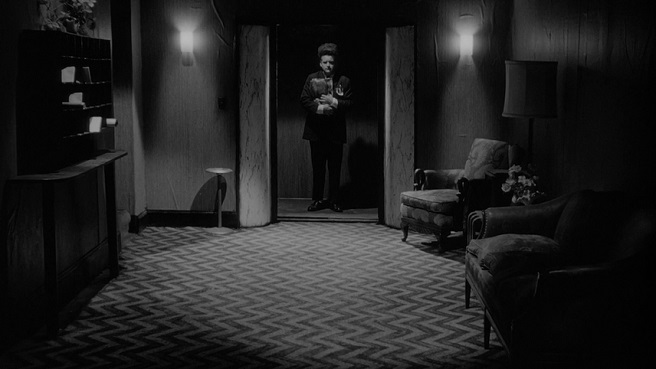
THE STORY: Blooming from a scant 22-page script, the story of ERASERHEAD was inspired by a few notable sources. First, two key literary works Lynched imbibed as a student – Franz Kafka’s The Metamorphosis (1915) and Nikolay Gogol’s short story The Nose (1836) – were both heavily influential on the screenplay. Makes sense, particularly the former, as not only is ERASHERHEAD Kafkaesque, but in time, people would look back on it as a quintessential Lynchian endeavor. Both adjectives are accurate, both adjectives are complimentary. More germane to Lynch’s life at the time however, it’s been reported that ERASERHEAD was born out of Lynch’s deep-seeded fears and anxieties about the birth of his first child, Jennifer. See, Jen was born with severely clubbed feet, and required intense corrective surgery as an infant. This set David down a therapeutic path of dealing with his own feelings about an unexpected conception and the concomitant birth defects of his firstborn.
As for the actual narrative, the film follows Henry Spence (Jack Nance) – a deeply anxious, uncomfortable and uneasy oddball who works lives and works at a factory in an industrial wasteland. His quiet, cowering demeanor instantly lets you know this man suffers from extremely impoverished despair, as well as a sense of isolation and alienation. The whole film is imbued with this tonality, this sense of disheveled poverty-stricken unhappiness. Apparently this was inspired by Lynch’s early days in Philadelphia, where his family lived in an environment of “violence, hate and filth.” As DL puts it, "I saw so many things in Philadelphia I couldn't believe …I saw a grown woman grab her breasts and speak like a baby, complaining her nipples hurt. This kind of thing will set you back". Haha, if that will set you back, ERASERHEAD will set you apoplectic!

Spence visits his girlfriend Mary (Charlotte Stewart) and her parents Mr. and Mrs. X (Allen Joseph and Jeanne Bates) for dinner. A surreally sinister mood is further enhanced when we meet not just the super creepy parents – the mother lewdly advancing on Henry by licking his neck, the father leering creepily with a maniacal grin – but honestly, the odiously deformed offspring of Henry and Mary has to be one of the gnarliest and nastiest creatures I’ve ever laid my two orbs upon. Scarifying! The mutated baby continues to cry and grow ill, infected with open lesions and sores on its face and maw. Henry tires to care for it, but can’t, and soon he becomes wracked with visions of these squirmy umbilical worm like creatures, many of which come pouring out of Mary’s nether region. What’s real, what’s not, all blurred by the hand of Lynch’s maddening magic touch!
WHAT HOLDS-UP: A few pacing issues aside, everything that ERASERHEAD set out to achieve in 1977 still retains its unforgettable power today. No question. The head-scratching shock value, the discomforting tone, the extremely stark imagery and unwelcoming atmosphere, they all still land with undeniable impact. The feeling elicited when watching the film cannot be overstated. It’s a jarring, system jolting display that strikes right down to your core, lingers in your gut and seeps deep into your bones. The dreary, depressing disparity is hard to shake. Honestly, there are times when it’s no fun at all to watch, and downright tough to stomach. Put it this way, there’s a reason why troubled poet Charles Bukowski called it his favorite film of all time, and yet another why the great H.R. Giger called it one of the greatest films he’d ever seen, admitting that Lynch was able to realize Giger’s vision better than his own film work. ERASERHEAD inspires even the most twisted of minds.
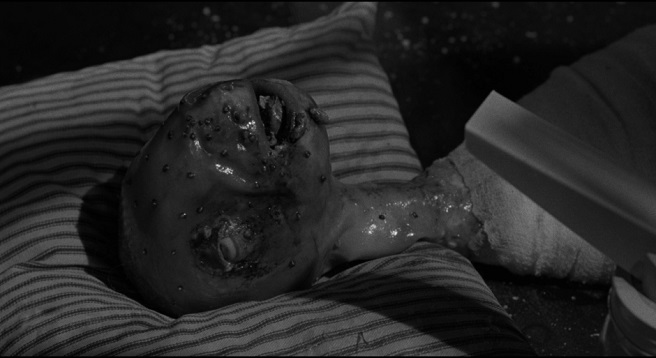
But really though, let’s put baby in a corner. What. The. F*ck. Seriously? While nobody knows for sure, something Lynch takes great pride in, word is the baby in the film was created by using the embalmed fetus of a calf. I’ll buy that, it sure looks feasible. It’s definitely inhuman, that’s for sure. Lynch was so intent on keeping the baby a mystery that, even during dailies while filming, he ordered the projectionist to avert his eyes during the baby scenes so no one would become wise to how it was achieved. More confounding yet, Lynch reportedly buried the embalmed calf in an undisclosed locale and held a fake wake for the damn thing durig the films wrap party. Now that’s f*cked up!
Speaking of, how about that surreal, head-spinning finale? First, the way in which Henry musters the gall to cut the bandaging off the baby’s body, only to find a ripped open, eviscerated mound of gruesome innards, is the stuff of sweat-inducing night terrors on its own. Add in the fact he takes a pair of shears to one of the intestinal sacks (or whatever the hell), punctures it until a gooey geyser spurts blood and viscera all over the place, all the while the baby gulps, gasps, convulses and screeches in pain…yeah, it’s just about as unpleasant a scene we’ll ever see. Not for the squeamish or intestinally challenged. And that doesn’t even include the giant growing head that results directly after. You know what I’m talking about, right? Well, apparently, in the DIY spirit of the entire production, the enlarged baby head was made by Lynch and Nance themselves. It was created in Lynch’s own backyard where neighbors could easily spot the ugly looking sumbitch, to which they referred it as “that big egg.” How rotten!
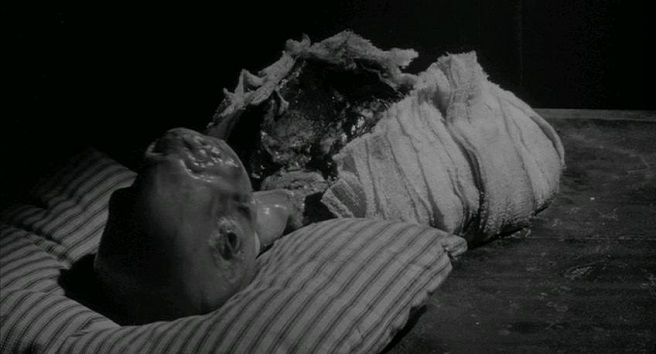
WHAT BLOWS NOW: I can’t. I won’t. I shan’t. ERASERHEAD is a bona fide cult classic for a reason, and not much about it other than it’s rare stints of borderline amateurism has sapped its impact. Even the fact that the film was made over the course of five years, with many sets destroyed and rebuilt in the interim, never makes the movie threads unravel. Hell, there’s one shot where Henry gets up from the bed and walks through a doorway, and there is a 18 month gap between when he enters and comes through the other side, and it 100% matches. The continuity of the film, given its protracted assemblage, is as impressive as anything else.
Look, there’s a reason why the movie became a midnight movie mainstay, where it played continuously for over one year in Los Angeles and three years in San Francisco. There’s a reason why the great Stanely Kubrick implored his cast and crew on THE SHINING to watch the film prior to shooting in order to get them in the right mindset. There’s a reason why the film has been voted by Premiere as one of the 25 Most Dangerous Movies Ever, #14 on the Top 50 Cult Movies by Entertainment Weekly and included in Steven Schneider’s 1001 Movies You Must See Before You Die. Not much about the film blew then, and it not much about it blows now!
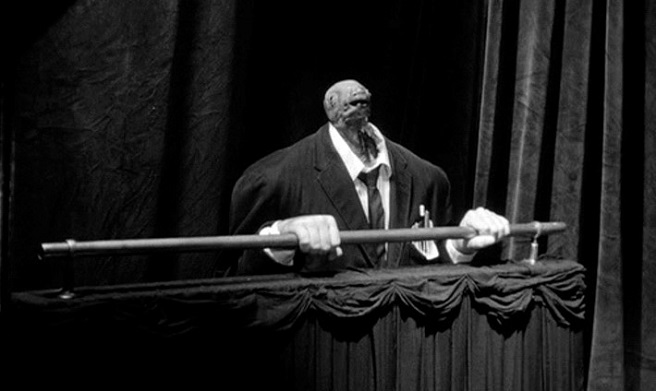
THE VERDICT: 40 years later and it’s never been clearer: ERASERHEAD is still the definitive cult classic horror flick. It holds up so damn well that it’s truly hard to wrap your mind around the fact it was Lynch’s first film, unthinkably made over the course of five years with only $20,000. It would not only inform the rest of his distinct filmmaking career, as important a byproduct as any, but on its own merits, ERASERHEAD does everything now that it intended to back in ’77. That is, it makes you feel grossly anxious, isolated, alienated, deeply disturbed and outright horrified. That a film this homemade and low-budget, it’s a total testament to Lynch’s artistic acumen that the film has not wilted or withered very much at all over the past four decades. It’s a special film from a special talent, and will likely be shocking audiences for ions to come!
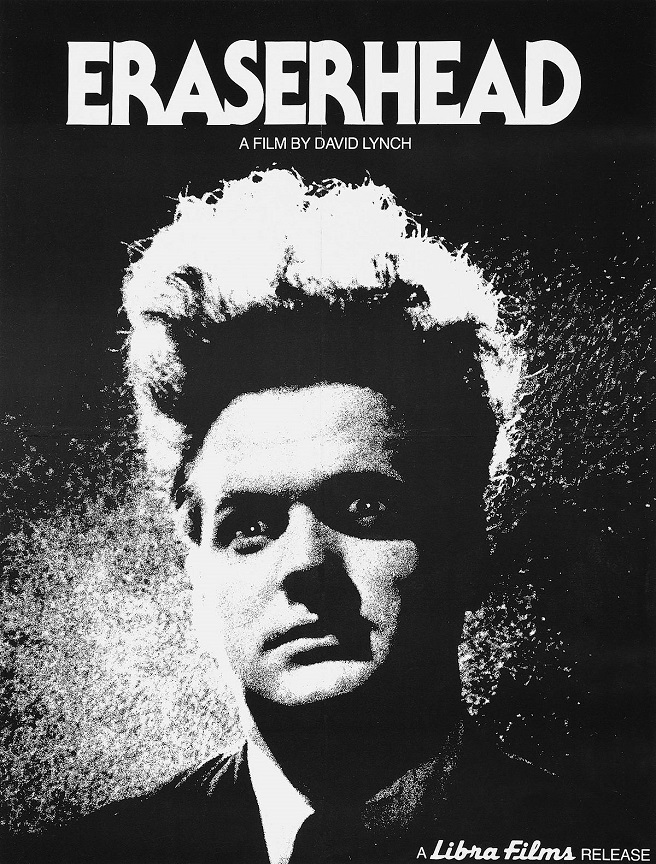


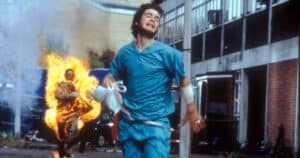




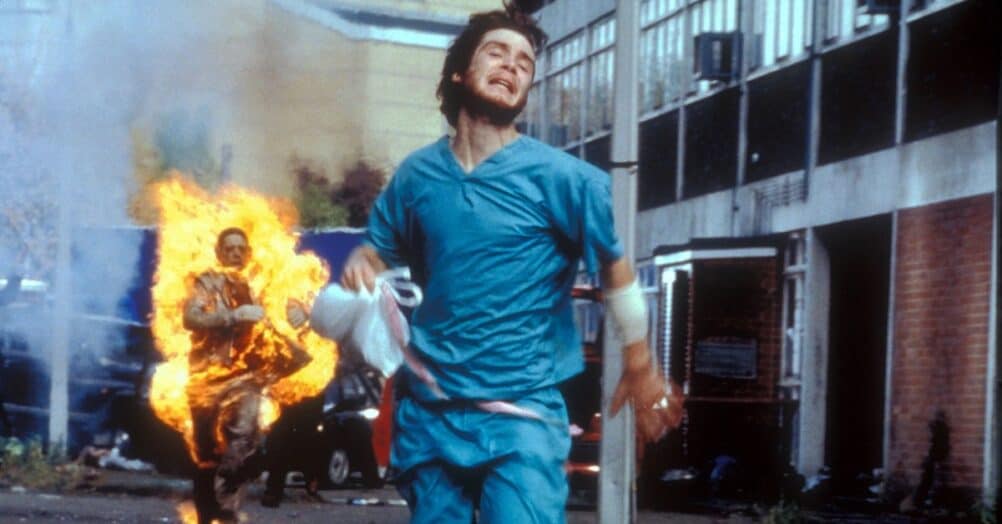





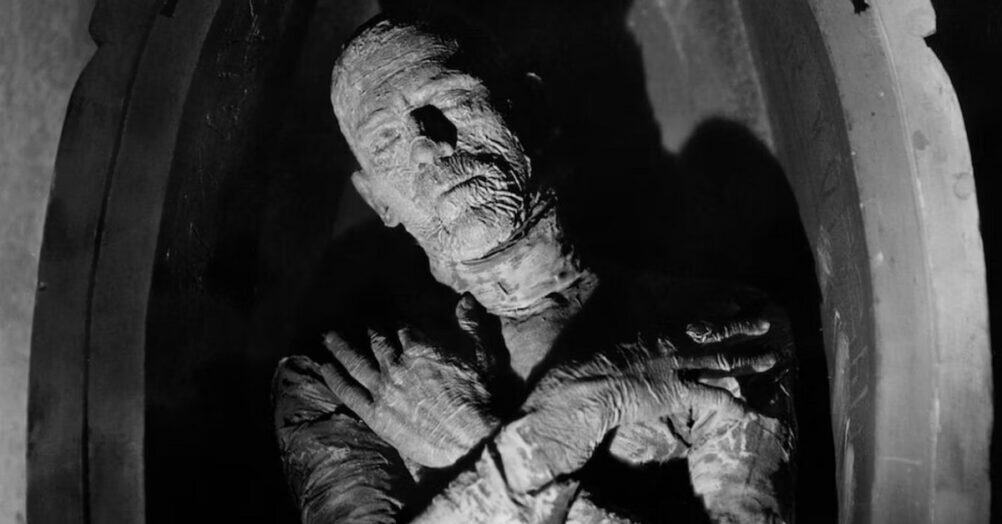
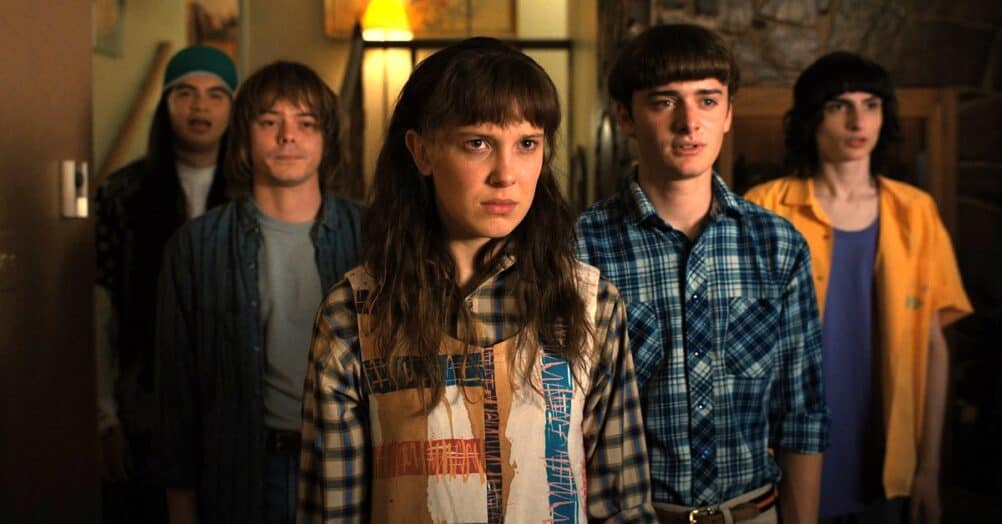


Follow the JOBLO MOVIE NETWORK
Follow us on YOUTUBE
Follow ARROW IN THE HEAD
Follow AITH on YOUTUBE